For the love of colour
How to plant a flower garden
There’s no season like spring to inspire the gardener that’s in all of us. Now’s the time to create a flower garden that will bring out the artist in you. You’ll be rewarded with hours of fun, a garden to be proud of, and armloads of flowers for indoors.
Flower gardens get a bad rap for being hard work, but that’s not necessarily so. We are not necessarily talking grand English borders here. Whatever the size of your garden (or budget) you can cultivate your own corner of delightful floral abundance.
Making it easy
Start small
Don’t bite off more than you can chew. Your first flower garden may be a simple planter box. Over time, as your confidence grows, increase the size.
Know your site
Most flowering plants perform best in sun, but if a shadier spot is your only option you can still create a colourful flower garden. There are quite a few flowering plants and loads of beautiful foliage plants that are suitable for partly shaded areas.
Choose high performance plants
One of the biggest advantages we have over previous generations of flower gardeners is the vast array of modern bred plants that flower their heads off from early spring right through until the first frosts, or longer. Superior disease resistance and extreme weather tolerance complete the package.
Invest in the soil
Build up your soil before planting with compost. If your natural soil is poorly drained plant in raised beds or a collection of large pots and baskets. Fill these with good quality container mix that has a controlled release fertiliser.
Cover the soil
Plants that have the benefit of a layer of organic mulch almost always grow better, particularly in hot summer and autumn weather. As well as keeping the soil moist, good mulch means little or no weeding.
Keep it casual
Avoid the pressure that comes with trying to keep the straight lines and orderliness of a formal garden. Make it easy on yourself and go for the relaxed ‘cottage’ look of happy informality with a colourful jumble of flowers and foliage. Mixing flowers with edibles makes for a truly authentic cottage garden.
Seedlings as fillers
Annuals such as Californian poppy, cosmos, alyssum, lobelia, petunias, coleus and sunflowers are all easy to grow from seed or available as seedlings in punnets from the garden centre. A cheap and cheerful flower border may be created using annuals. Or, as part of a more permanent border, they make excellent space fillers with the opportunity to create a new look each season.
Watch out for thugs and muggers
Overly vigorous plants can swamp smaller or slower growing plants. Plant them in a bed of their own or with plants of similar vigour.
Have fun and break rules
Shun fashion. Grow what you love and don’t be afraid to make mistakes. The more mistakes you make the more you will learn.
Design tips
Repeat yourself
The most effective results come from keeping the plant list short and repeating clumps of the same plant throughout the garden.
Go wide
If you have space, make your garden deep enough to fit at least two tiers of plants. Skinny borders that have room for only one row of plants generally look best planted with a single variety.
Go high and low
Include plants with a range of different heights.
Look beyond colour
When choosing your plants, make sure some of them have really strong silhouettes. That might be in the shape of the flower heads (e.g. hydrangeas and euphorbias), big bold leaves (e.g. ligularia or bergenia) or the form of an entire plant (e.g.dome shaped shrubs, weeping grasses or large spiky succulents).
Don’t forget winter
Add some foliage plants and evergreen shrubs for year-round interest. Aim for a mixture of interesting foliage textures e.g. sword shaped astelia, libertia, dwarf flax, fine and silky grasses, bold hostas and bergenias.
Five of the best perennials for long season flowering
Modern perennials that bat higher than average, flowering freely from spring through summer and beyond, are worth their weight in gold.
| 1 | Penstemon |
| 2 | Marguerite Daisies |
| 3 | Dianthus |
| 4 | Alstroemeria |
| 5 | Osteospermum |
Feed me!
It makes sense that perennials, which put so much energy into flowering, need food to keep them going. The easiest way is to feed them in spring is with controlled release fertiliser. Re-potting into fresh potting mix will give tired container plants a new lease of life.

11-Sep-2015

Perennial garden
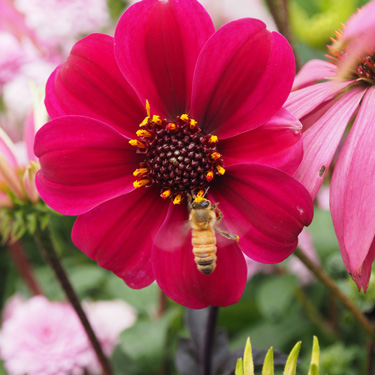
Dahlia 'Mystic Allure'

Penstemon 'Taffy'
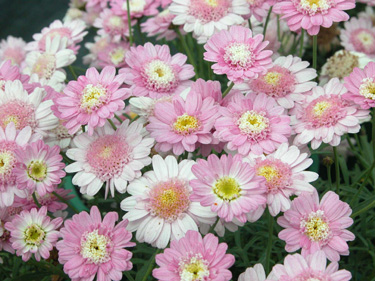
Marguerite 'Sugar Candy'
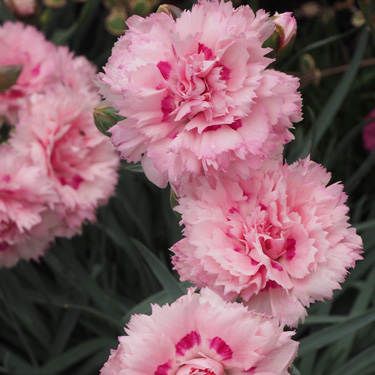
Dianthus
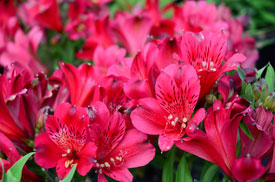
Alstromeria red
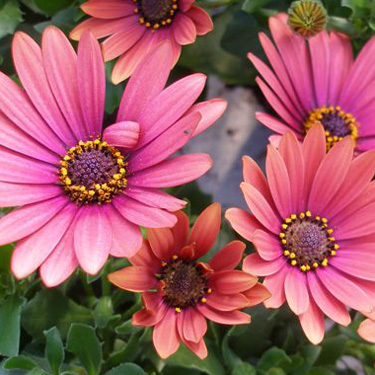
Osteospermum Cape Daisy Nuanza Copper

